How to Install Low-Voltage Landscape Lights
Installing low-voltage landscape lights has been on my “Want To Do” list for years now. I even bought some lights on clearance three years ago! Now that they are installed I’m kicking myself for waiting so long. They look so inviting.
Materials:
(contains affiliate links)
- Hammer
- Drill
- Screwdriver
- Pliers
- Wire strippers and cutter
- 3M Heavy Duty all-weather duct tape
- Landscape lights (it might be wise to purchase one extra, you’ll see why later)
- Transformer for Outdoor Lighting
- Low voltage landscape wiring (I used 100 feet of 14 gauge, but check the directions for your lights)
In order to figure out what size transformer you need, you should add up all the wattage on the bulbs your lights use. This is a simple equation, for example, if your lights use 9 watt bulbs, then multiply 9 time the number of light fixtures you have. I ended up buying a Portfolio Outdoor 200W Magnetic Transformer for Outdoor Lighting. The transformer senses darkness and turns on the lights at dusk. I prefer this instead of a timer, especially because it will not need to be reprogrammed as the days vary in length throughout the year. The only downside is that they will come on during hurricanes, tornados and big bad dark thunderstorms. Then again, that isn’t necessarily a bad thing.
Matchy-Matchy. How to unify two colored lights:
Well, of course once I got ready to install our lights, I realized I needed more. Because the lights I bought were on clearance, they were no longer available in the stores. So, what’s a girl to do? I got eBaying and creative!
I was able to buy similar lights from an eBay seller. The fact that they were a different color was not going to dissuade me! Not when I have a can of spray paint in my arsenal. That and a can of automotive primer was all it took to turn those brown lights black (well, Oil Rubbed Bronze to be exact.)
After the paint dried, I began laying out my lights along the front path.
I decided to stagger them for maximum illumination along the path and to avoid creating an airport runway look (aka symmetrical.) I don’t know if you believe in UFOs, but I’m not taking any chances.
Installing the transformer:
*Be sure to read all the directions that come with your transformer. The following tutorial is based on the Portfolio transformer I purchased. Your directions may vary.
You will need to locate your transformer near an outdoor GFCI outlet. Luckily I had my electrician install an outlet last year. (Yes, there are some things that I will leave to a professional. Adding new wiring is one of them.)
Measure up 18″ from the ground (or the height recommended in your directions) and use the template that came with your transformer to drill two pilot holes for the mounting screws. Insert the anchors and tap them gently into the pilot holes.
Screw the mounting screws in, leave them extended partially to accept the holes on the back of the transformer.
Split the end of your low voltage wire. Then strip a small amount off the ends using your wire cutters. Slip the wires through the holes on the transformer and tighten the screws over the wire.
Play with the amount the screws extend until the transformer fits flush against the wall. Leave the transformer unplugged.
Installing the lights:
*Be sure to read all the directions that come with your low voltage lighting. The following tutorial is based on the Malibu lights I purchased. Your directions may vary.
Dig a narrow trench along the path to the location of each light. Aim for 8 – 12″ deep, the deeper the better so you don’t accidentally chop your wire while digging or planting.
Because the wires are low voltage you won’t be harmed. However, if you accidentally cut your wire, you will have to re-install your lights all over again! NOT COOL!
Run the wire into the trench until you reach your first light. The directions that came with the transformer explain that you want your first light to be at or further than 10′ from the transformer. You can cheat this by making your wire loop or arc to take up more length on the wire before your first light. But, make sure your light isn’t so close to the transformer that it would be read by the photo sensor (the same holds true for having your transformer too close to your house lights.) Make a loop around your light. This protects the wire from being too taut and will hopefully prevent all your lights from being uprooted should someone accidentally (or intentionally) play soccer with one them. I can’t imagine that happening in our yard!
Open the connector on your light.
Insert the wire into the connector. Then press the connector back together firmly.
Unless you have super human hand strength, you may wish to use pliers (I used my Irwin Groove Lock Pliers) to press them together. You need to insure that the metal prongs pierce through the wire insulation and make contact with the wire inside. Later, if one of your lights doesn’t work, you’ll know that it could be that the connection isn’t tight enough.
Insert the stake of your light into the ground. Don’t fully bury it yet. Trust me on this one. It’ll save you from re-enacting The Diggingest Dog should your lights fail to work properly!
Repeat for the remaining lights. When you reach the end, you may wish to “cap” off the end of the wire with duct tape. This is not required, but I decided it was best to protect the wire from any source that might short it out.
Plug in your transformer and adjust the settings to turn your lights on. Do they work? Then clap yourself on the back! If not, you need to go back and check all those connections. Good think you listened to me and didn’t bury them, right?!
Let me tell you a little antidote about a girl, let’s call her “Whitney”, who buried all the connections, turned on the transformer and got all excited because the lights worked. Only to come back 30 minutes later to an error message on the transformer and no working lights. Needless to say, she had to dig up every single light and press all the connections tight again. Then she tested the lights only to be disappointed yet again. She was so frustrated, that she went inside and went directly to bed. The next day she spent too much time on hold with the customer service numbers for the transformer and the light manufacturer. They weren’t much help. “Yes, I read the directions. Yes, I checked the connections. Yes, yes. YES!… Okay thanks (or no thanks!)” But, she knew she was smarter than the average bear, so she systematically removed one light at a time and then turned on the transformer. Finally upon removing the last light and plugging in the transformer she found that they suddenly worked. I’m not sure why (errr, I mean she wasn’t sure why that last light caused the problem), so she decided to discard the last light.
For good measure once all the lights are working, wrap the connectors in Scotch Heavy Duty All-Weather duct tape to keep them sealed and connected. Call it overkill, but I didn’t want to end up like Whitney.
It doesn’t have to be pretty to be function. Just ask Pretty Handsome Guy, since this does remind me a LOT of that post he wrote for me.
NOW, you can bury the light stakes, check that they are level and then fill the holes with dirt and pack it down.
And that is it! This is a relatively easy install. It may require a little bit of patience if the lights don’t work at first (or second.) But, if all goes perfectly, this is a half a day project.
Landscape lighting can improve your curb appeal, and also the value of your home. They are also great for deterring thieves. But, I like them because they light up my beautiful plants. And, because, it is very relaxing sitting outside after dark in the glow of the lights with a drink in hand. What more reason could you need for installing landscape lights?
What do you think? Do you like? Is this a project you think you could attempt yourself? I bet you could.
Disclaimer: I was not paid by Portfolio or Malibu to write this post. Those are the brands I purchased with my own money. The 3M All Weather Duct Tape was sent to me by 3M to use. As were the Irwin Groove Lock Pliers. I was not compensated in any way by them. Nor was I swayed to write positive things about their products. There, I think that covers everything.

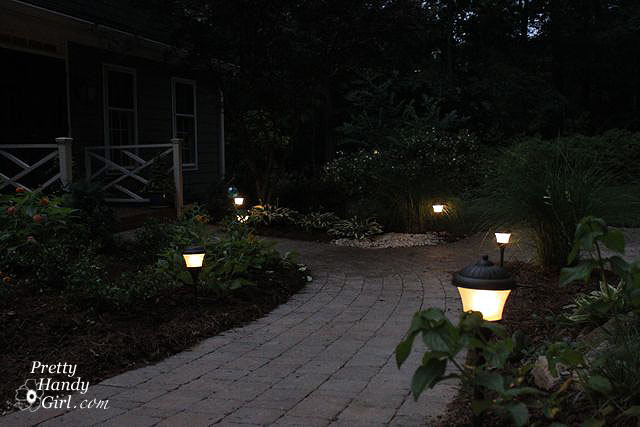
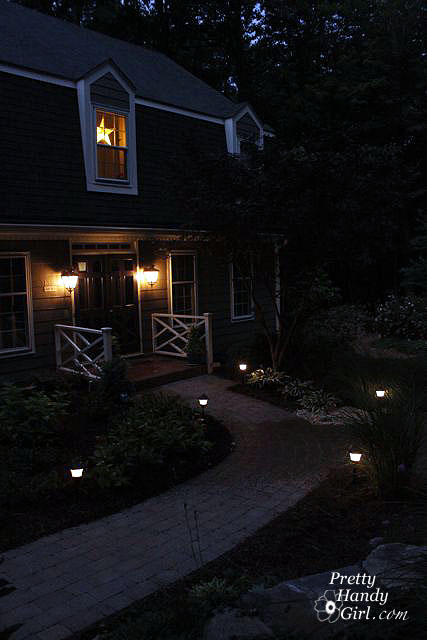
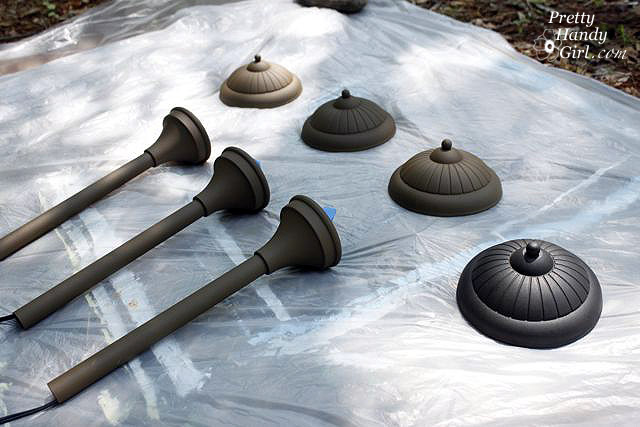
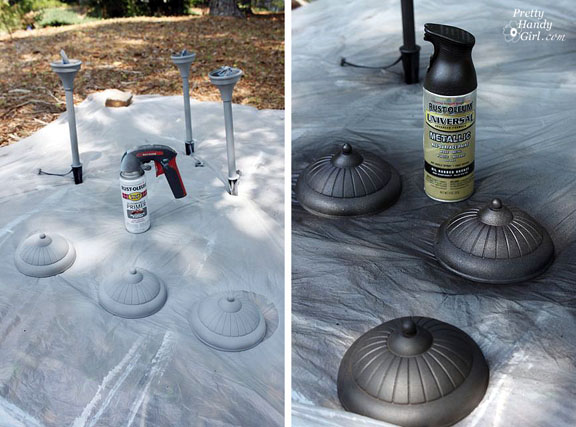



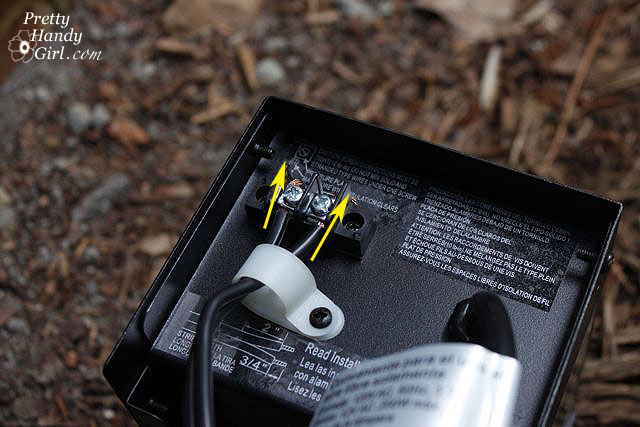




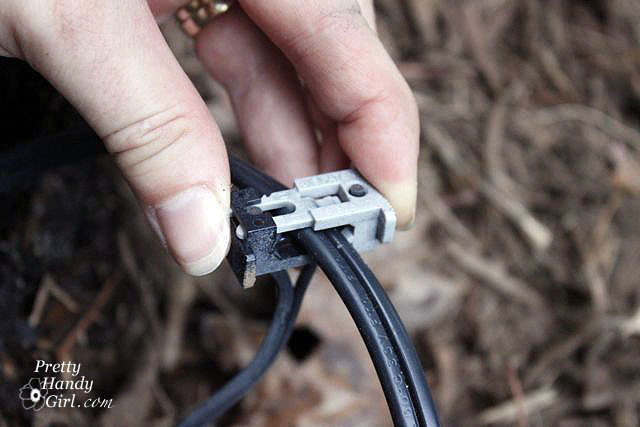
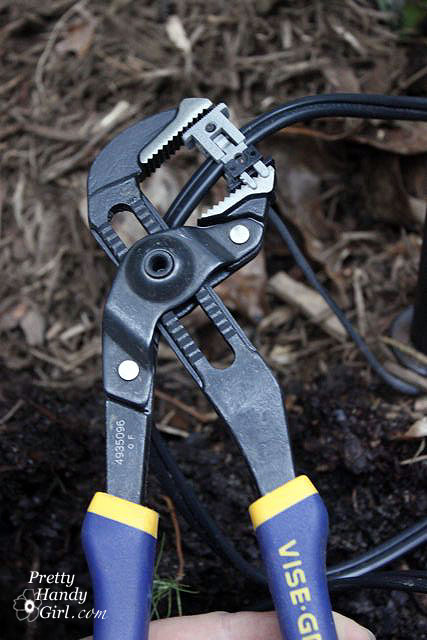
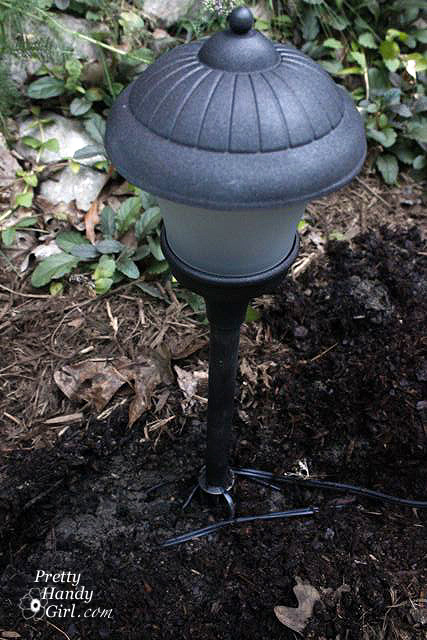
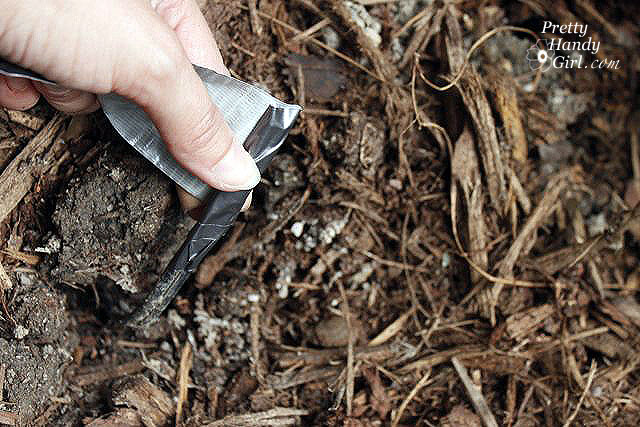


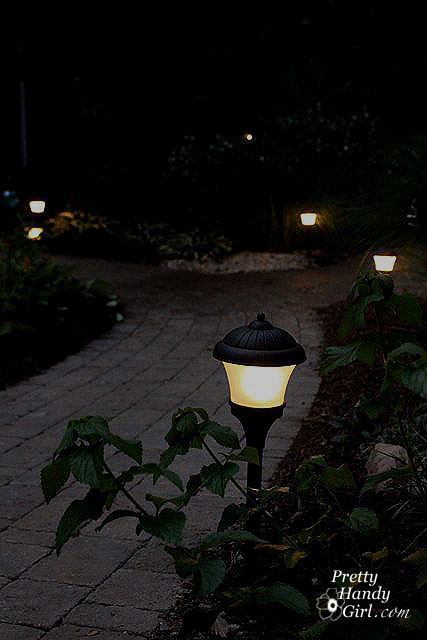
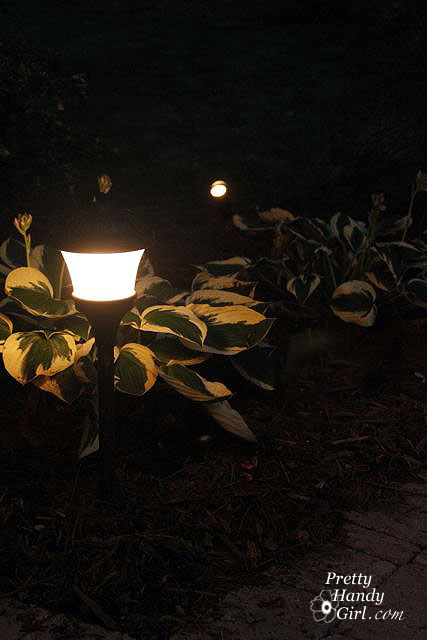


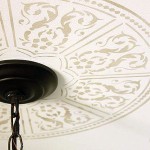
LOVE your yard! Wish I enjoyed planting things — I have a minimalist landscape full of evergreens that requires barely any trimming and am a heavy Round-Up user. haha The lighting turned out beautiful!
Thanks Michele. Minimalist yards are great!
Thanks! I want to move my landscape lighting and this helps a bunch.
I just finished installing my Malibu garden lights and three of the lights are not working. Once you have snapped the connectors together, can you take them apart? And if so, how do you do it? I am pretty sure they are tight, but perhaps the wire was not pierced correctly.
You can definitely take them apart. Just squeeze the bottom prongs of the connector if I remember correctly. And I did have to use the pliers to get the “teeth” to pierce the wires insulation.
This is a great post. I wonder, are the lights on one continuous electrical wire all connected? If so, did you trench the wires under your beautiful paver walk? What do you recommend if someone has a sidewalk/driveway and would like to stagger lights on either side?
Maria, yes it is one continuous loop. The line goes up one side of the path and I laid a PVC pipe under the pavers before they were installed. We had a concrete sidewalk at our old house and used a PVC with a cone shaped nozzle on it to bore through the dirt under the sidewalk. It was tedious but worked. Otherwise, you might need to contact a landscaper.
Well this is just nifty! Last year the previous tenants in our rental house kinda scooted out in the dead of night, mid-month…they must have been in a hurry cause they forgot to pay rent AND they forgot to take a pretty decent set of 20 malibu/spot lights…however (oops) they apparently did remember to take the instructions…so I’ve had this basket of various parts just sitting around looking complicated…until now! Yea! I can finally put these puppies up! Maybe I should go for the runway look just in case they were abducted by aliens and need that well lit landing strip to find their way home…
Thanks so much for the great instructions!
I always wanted to install landscape lighting but that whole electricity thing scared me! I think we might be installing some landscape lighting this fall. Thank you for the excellent tutorial.
That’s intense (smile). You’re brave! We just got some solar powered ones (yes, in the Pacific Northwest of all places) and they’ve worked great. I think I want to do uplights at some point and this tutorial will be really great for walking me through it.
Thanks for sharing!
LOVE how this turned out.
Very good idea and a very good how to.
Thank you Curt!
PHG – You are my HERO! I’m off to Homo Depot or Lowe’s!
🙂 You flatter me, but they really aren’t difficult (unless one of the lights wants to be “difficult”!) Good luck, you won’t regret installing them.
So pretty! We have a small terrace and we have installed a couple of landscape lights under palms. They look fabulous. 🙂 Good work there
Thank you for your comment. I was wondering if anyone was reading this post ;-D
Hmmmm… That whole emphasis on the word “might” didn’t work very well. LOL!
I’ve always wanted landscape lighting and your post makes it look easy enough that I think I might be able to tackle it. I bet your friend, Whitney, wishes she had your talents (wink, wink). Thanks for another awesome tutorial!
I bet you could do it! Go for it. And email me if you get stuck.